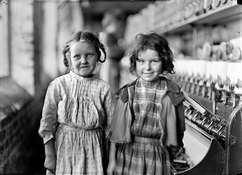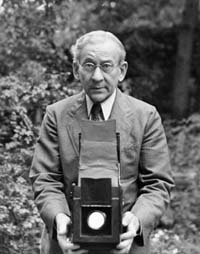Happy Birthday, Lewis Hine!
67You may not know his name, but you know the images he captured over 100 years ago, which eventually led to the change in child labor laws in America.
Lewis Hine worked as a school teacher, where he encouraged his students to use photography as an educational medium. It was around this time when he also started bringing students to Ellis Island to photograph the thousands of immigrants arriving each day. Between 1904 and 1909, Hine is said to have captured over 200 photographic plates. (If this doesn’t sound impressive to you, please remember that he did it using a large format camera and 8×10 plates… like this image below…)
During this time, Hine came to the realization that documentary photography could be employed as a tool for social change and reform. He followed his curiosity, left his teaching job, and began photographing for the National Child Labor Committee.
Over the next decade, Hine documented child labor, with the focus on the use of this labor in textile mills, factories, sweatshops, coal mines, and on farms. He often hid his camera, sneaking into buildings or posing as an inspector or salesperson. He took notes on every child he photographed. He measured their height by where they stood against his suit jacket (the height was the same as the 2nd button). He learned to write with his hand inside his pocket in order to get accurate captions without giving himself away.
It was these photos, along with the detailed captions, that the NCLC distributed to educate the public that child labor should be illegal. They were published in newspapers, brochures, and circulars to get the word out.
Hine’s photographs made visible the long-ignored plight of working children, and his work played an important role in the movement to enact federal and state child labor laws (which were often paired with compulsory education laws to keep children in school), culminating in 1938 with the Fair Labor Standards Act, which included distinct protections for children.
Happy Birthday, Lewis Hine!
Your work and your photographs made a difference.


